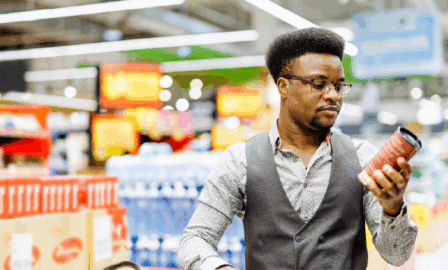Three Click-and-Collect Imperatives for the CPG Industry
Many industry assumptions about the consumer’s path to purchase and their interactions with brands changed during the pandemic period, prompting many CPG companies to wonder which behaviors and preferences would remain for the long term. Stay-at-home and social distancing requirements accelerated the adoption of “click and collect” in retail, as consumers demanded ways to shop online and get their goods with little or no contact with others.
In the US, click and collect sales more than doubled last year to $72 billion and are expected to reach $140 billion by 2024, as the adoption expands. For example, the use of click and collect in the grocery category is expected to reach 60% by 2022. Given the convenience and added flexibility for the consumer, there is little double that click and collect models will remain an important reality of retail for years to come. That’s why retailers are re-thinking how they fulfill these orders in store efficiently.
To that end, many retailers are launching micro-fulfillment centers (MFCs) that organize inventory in a way that makes picking click and collect orders easier and faster. Following are three imperatives for leveraging the power of MFCs for your CPG brand.
Level 1 – Strategic Planning and Product Availability for MFCs
Begin the process by assessing the products most appropriate for the MFC, typically the fastest moving goods with the strongest consumer demand. Since each retailer has a very limited assortment available in MFCs (compared to standard aisles), inclusion could create significant incrementality. Sales teams should engage with their buyers to promote their products for inclusion.
Next, manufacturers should assess how to drive availability for those products 24/7. This is critical because stock-outs in an MFC often go to competitor products or result in no fulfillment at all, which further alienates customers. Start by reviewing supply interruptions and conducting a root cause analysis on typical issues. Digging deeper into supply challenges may spark new ideas to address.
Manufacturers should continue to assess other components of the supply chain that influence availability, including those that might have been overlooked due to a potential downside. For example, retailers are more likely to make exceptions to hard and fast rules such as truck scheduling at distribution centers (DCs) to ensure availability. Retailers are also often willing to bend the rules to improve availability of faster–moving products. For example, retailers pressure manufacturers to minimize the number of SKUs in store to manage data complexity and reduce multiple inventories. However, since the upside from 100% availability in the MFC is larger than the additional inventory carrying cost, there is an argument to be made for creating unique SKUs and asking retailers to hold additional inventory.
Level 2 – Adjusting Shipping Packaging for MFCs
With planning and supply chain considerations made, manufacturers can explore options for optimizing shipping packaging for MFCs. Consider the processes retailers use in DCs and stores to prepare their product for picking, which may differ from the steps to break down the product from bulk to standard shelf configurations. This process may uncover opportunities to change configurations or shipping materials that can reduce the time necessary to prepare it for picking. For example:
- Remove a flap on the bulk configuration to reduce steps
- Reduce the time or steps to pull a case
- Make the product more stackable
- Designed for high-density storage
To strengthen strategic partnerships, manufacturers should ask how they can solve problems for their customers and make their processes more efficient. This could improve product inclusion in MFCs and create significant upside.
Level 3 – Optimizing Product and Product Packaging for MFCs
Finally, identify opportunities to optimize products and their packaging for a click and collect future. The critical question to answer is, “how do pickers’ experience selecting items differ from consumers’?”
The answers impact packing or the pack sizes of saleable units, product shape or size and other less-obvious changes. For example, without the need to catch a consumer’s eye on a crowded shelf, product packaging design can be less vibrant and optimized for warehouse-style shelving. Without the need to “carry to the car”, weight considerations can focus less on the considerations of consumers having to carry the goods to their cars.
In certain categories, product and packaging changes can be significant. Consider the fresh produce industry where there is often one brand on the shelf and consumers shop based on how the product looks. In absence of information about a consumer’s preference, pickers will select products for online orders for other reasons. Suppliers can consider product optimizations that focus heavily on how the product is used, not how the product is shopped. They can adjust the count or packaging or educate the consumers on the use of products regardless of how it looks.
Click and Collect Models in the Future
Because click and collect models are here to stay, retailers are considering several methods to make the picking and packing of online orders more efficient in store. To support this future, CPG manufacturers have an opportunity to make it easier for their customers and evolve their offerings for the future.
Subscribe to Clarkston's Insights
Contributions by Belen Berdegué



